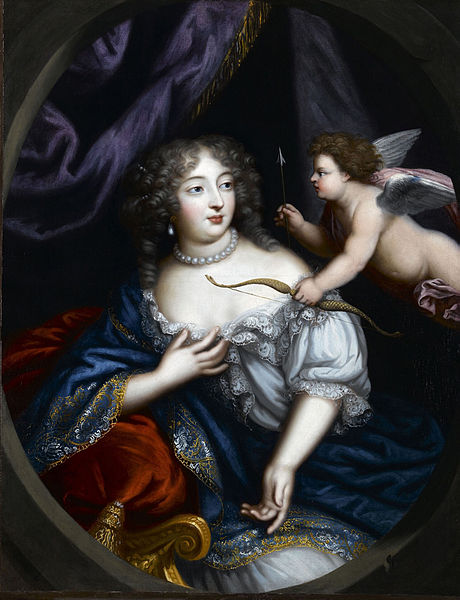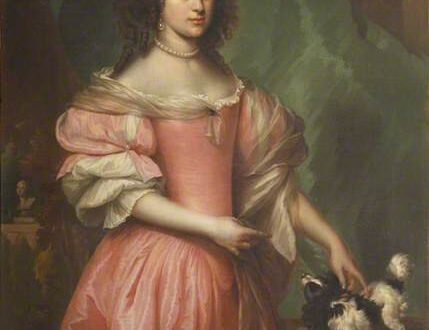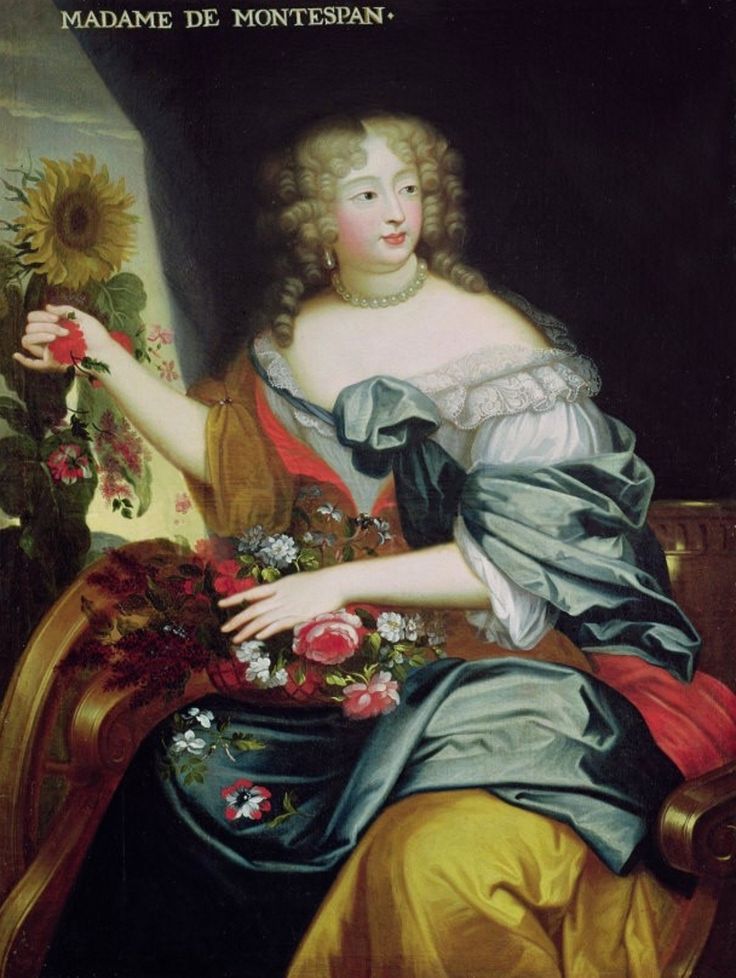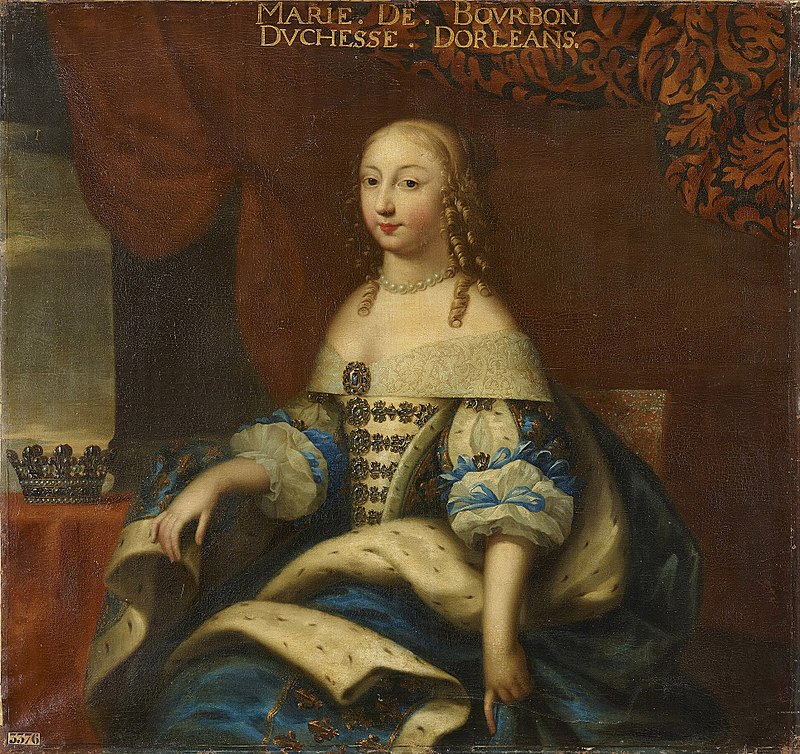Claude de Vin des Œillets
Claude de Vin des Œillets, dite Mademoiselle des Œillets, was born in the Provence in 1637, as daughter of Nicholas de Vin and Alix de Faviot, better known by their stage name des Œillets, both being actors and country comedians, leading a nomadic life.

This lifestyle full of privations came to an end as Nicolas fell ill and died, leaving Alix and Claude to care for themselves. Their way let them to Paris, where Alix entered the stage again and swiftly became a well-known and celebrated actress at the Hôtel de Bourgogne. She was considered to be one of the best actresses in the 1660’s and particularly celebrated for her roles in tragedies, where she often played the female lead role. Alix performed in tragedies of Pierre Corneille, Jean Racine and Thomas Corneille and was praised by Jean Donneau de Visé, founder of the literary, arts and society gazette le Mercure Galant, to be”one of the top actresses in the world“. She died in 1670 after an illness.
Claude, in first, followed her mother steps and tried herself as actress, but diverted from the stage to domestic assignments, which brought her substantial revenues and good relations to the Parisian upper class and nobility.
Around 1668, Claude entered the patronage of the Duc de Mortemart, Gabriel de Rochechouart de Mortemart, father of Madame de Montespan, to which Claude was recommended by her older sister Gabrielle de Rochechouart de Mortemart, Marquise de Thianges.
Claude entered the service of Madame de Montespan as a lady-companion, as the rise of the latter began, and became an intimate friend to the Marquise. Said to be of utmost discretion, Claude was, for a short time, responsible for the upbringing of the first child the Marquise de Montespan had with the King. Claude lived near the Tuileries, where Louis XIV held court, during this time and not at the Palais itself, most likely for reasons of discretion. Both the King and Madame de Montespan feared Monsieur de Montespan may lay claim to the child born to her and the King, as it was his right as her husband, and that it might be taken to be raised by the Marquis out of spite.
Since the King and Marquise wished Claude to be available at all times to follow her mistress wherever she went with the court or the King, a bargain was arranged and the child, as those who followed, placed into the hands of the widow Scarron.
Louis XIV showed his gratitude for Claude’s discretion and services in December 1772, by gifting her a relatively large estate in Clagny on which a mansion was to be built, after plans provided by Colbert. Claude acquired wealth, not so much with what she was payed by her mistress, more due to gifts she received by Louis XIV and her position of royal favour, making her in the eyes of the court clearly more than a simple companion. This royal favour was extended to other areas as well. Louis XIV always had more paramours than one, even if there was an official maîtresse-en-titre. There were several women, who shared the King’s bed on occasion or whose bed the King visited, some of them noble, some mere maids. Claude became one of them.
The court chronicler Primi Visconti writes in 1675: “This young lady (Claude) suggested that the King had had intercourse with her several times. She even boasted of having children. She is not beautiful, but the King was often alone with her when her mistress was busy or sick. Des Œillets told me that the King was troubled and that he sometimes stood for hours by the fire, highly thoughtful and sighing.“.
Alexandre Sallé writes: “Louis XIV had many mistresses before Madame de Maintenon. It is even said that the first was Madame de Beauvais, the first maid of the queen-mother, … Among these, was a Mademoiselle des Œillets, daughter of an actress, who had the King’s friendship for a considerable time, long enough for her to hope to become declared mistress, but the taste of the King changed…. Mademoiselle des Œillets often benefited of the King’s favors, when his mistress (Madame de Montespan) was indisposed or fat or sick. Athénaïs hoped that the favor of the King would not leave her, if the Sovereign slept with a person of her entourage.”
Alexandre Sallé says further 3 children have been born during this affair, but the court is only aware of a daughter, born in 1676, named Louise de Maisonblanche, who the King never recognised as his own.

Claude fell from favour, a year after the birth of her daughter, along with Madame de Montespan as their involvement in the Affaire des Poisons became known to the King.
It was claimed by those involved that Claude had taken the place of the Marquise on several occasions as black masses were performed and that, on other occasions, she was the one to visit La Voisin in order to acquire love potions meant for the King and later poisons. As well as that Claude began to tire of living in the shadow of the Marquise and sought herself to take her place as maîtresse en titre. Apparently angered by the fact that the King did not recognise her daughter as his own, she began to plot, without the knowledge of Madame de Montespan, to poison the King by replacing the love potions with poison.
Thus making it look like Madame de Montespan was the guilty part, as it was indeed perceived. La Voisin’s daughter claimed that Claude was accompanied by a mysterious English Lord, who passed as her lover, and proposed a reward of 100000 écus for the person that would help her leave the country unseen. She also suggests that it might have been a political intrigue against the King, who indeed suffered of mysterious headaches, vomiting, and the feeling to choke at this time. These maladies were later thought to have been caused by the love potions, consisting of rather obnoxious ingredients, given to him by Madame de Montespan in an attempt to keep the King’s affection.
The mysterious English men was once again seen together with Claude a couple of months after the claimed switching of love potions with poison. This time a black mass is said to have been performed after Claude had removed herself from the service of Madame de Montespan. The hoped effect of the mass, once again the dead of the King, a desire both, Claude and her mysterious Englishman, shared. As claimed by the daughter of La Voisin, Claude later sought to murder Mademoiselle de Fontanges, the King’s new mistress from 1679 on. Mademoiselle de Fontanges died suddenly 1681, and as always with a sudden death, rumours of poisoning circled at court.
Madame de Montespan and Mademoiselle des Œillets were named as suspects and under torture, Françoise Filastre, an associate of La Voisin, stated Mademoiselle de Fontanges was murdered by the order of Madame de Montespan, which wished to rid herself of her rival. Filastre, however, later stated it was all just a lie, said to end her pain, and an involvement of Madame de Montespan and Mademoiselle des Œillets could never be proved. Today it is believed Mademoiselle de Fontanges died due to pleuro-pneumonia induced by tuberculosis.
Although she was questioned during the investigations of the Affaire des Poisons, Claude remained, even if not in favour anymore, under the protection of Louis XIV and Colbert, who sought to keep the true extent of the affair and the involvement of nobility from the public eye. Claude continued to live in splendour all her life, bought a a Hôtel in the Rue Montmartre as well as the Château de Suisnes, near de Brie-Comte-Robert, and its neighbouring territories. She employed a gardener, a maid, a cook, and a coachman for her two carriages, one lined with red-flowered velvet and six Venation mirrors that cost a fortune, the other grey and with two Venetian mirrors.
Claude de Vin des Œillets died a rich woman on May 18 1687 in Paris. Her daughter, Louise de Maisonblanche, was never recognised by the King and her parents officially stated as Philippe de La Maison-Blanche, a former cavalry captain, and his wife, Gabrielle de La Tour.



